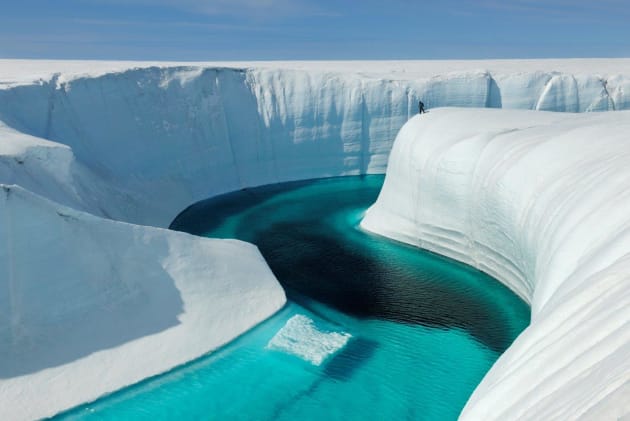In a hyper-paced world flooded with inconsequential images, the art of documentary photography has become more important than ever before. Amanda Copp investigates.
Today’s world feels like someone has slammed their foot on the accelerator and everyone is scrambling to keep up. Endless streams of information, and people with limited attention spans have become the norm. Moments that slow people down in this hyper-paced world are few and far between. But documentary photography allows such moments to occur, as well as contemplation, consideration, and, maybe, action. These photographers, dedicated to documenting the world around them, gently apply the brakes on this accelerated world and capture the stories of things left behind. Many of the issues facing people and the planet today are slow and inching forward. While others are far more rapid.

The effects of climate change, disappearing cultures, environmental decay, and socio-economic divides are all around us, but often forgotten as people race from one thing to the next. In this whirlwind of communication, long-form storytelling becomes increasingly important. Messages about struggling environments and cultures need to be heard, but how do documentary photographers get these important messages across? And in a society comparable to a room full of people shouting at each other, how can they make people listen?
Defining documentaries
Documentary photography is hard to define because, in a way, every genre of photography is documenting something. But the main point of difference is that documentary photography takes time. Brendan Esposito was, until very recently, chief photographer at The Sydney Morning Herald, and remains a keen documentary photographer. Throughout his career, he has taken every opportunity to spend time on extended projects.
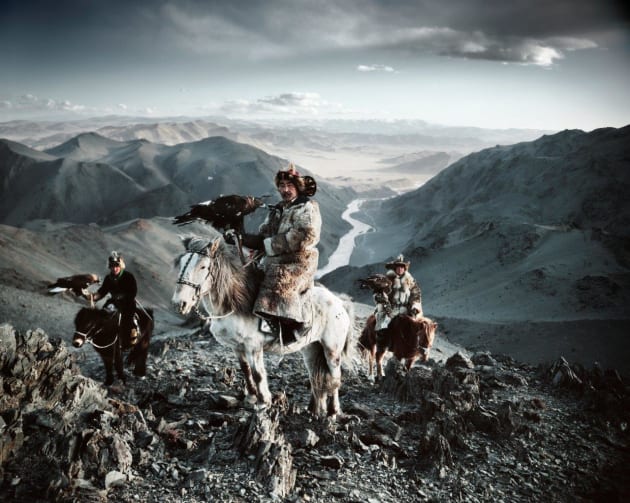
Esposito has documented Australia’s travelling circuses, the devastation caused by typhoon Haiyan in the Philippines, and the social problem of glue sniffing in Cambodia. “People need to make time,” says Esposito. “All great things in life take time. And photography is a medium that is governed by time.” The documentary approach often requires photographers to engage with their subject for weeks, months, and, sometimes, years at a time. “You need to immerse yourself completely into your surroundings so that the subject matter forgets you’re there and you become a fly on the wall,” Esposito says. “Then you are a documentary photographer. You yourself are not contributing to the storyline and then you are able to record true, daily life situations.” But even if photographers pursue longer projects, there’s no guarantee that audiences will pay attention. Esposito expresses his frustration at a world dominated by social media. “I think social media doesn’t have time for photojournalism and long-form documentary photography work, and I think that’s a huge issue.”
Shallow engagement
It is clear the timelines of documentary projects are in stark contrast to the speed at which our world operates. On the Internet – the undisputed communication hub of our age – audiences struggle to engage on a deeper level. And deeper engagement is often the very thing that is needed when looking at documentary photography projects. Award-winning, American photographer, Sebastian Copeland is renowned for documenting the polar regions and the effect climate change is bringing to their icy landscapes. Currently based in California, he says while the Internet is great for reaching many people at once, there is definitely a downside. “It can be more difficult to penetrate deeply into the subject matter and really impact audiences. It’s so easy to like an Instagram photo without really digesting what it means because you’re just scrolling through it,” he says. “There may be diminishing returns to the mass of communication that is being made available through social media.” Even personal websites are becoming less effective at engaging audiences as social media becomes the dominant communication platform,” Copeland says. “The more dedicated information that comes from personal websites is becoming more and more obsolete. It’s only the very committed followers who will take the time to go to a person’s website,” he says. But engaging people on social media takes considerable time and effort that few photographers can really spare, especially when much of their time sees them out in the field shooting. “Life was a lot simpler when magazines were sent images, and people cared. Today it’s a little more complex,” Copeland says.
Crazy talk

Esteemed American documentary photographer, James Balog, is well-known for his ground-breaking work, and particularly his film, Chasing Ice. He’s also disappointed at the lack of audience engagement with today’s important issues. Balog has spent much of his career dedicated to documenting glaciers and how the polar regions are responding to climate change. “It’s pathetic that the intellectual engagement of audiences today has been reset to a lower level than it used to be, and that’s what we can thank the Internet for. There’s a huge amount of volume, but not a lot of wisdom,” Balog says. He is reminded of an old comedian skit that parallels how he thinks the world functions today. “The gag line is, ‘One of us is crazy here, and it ain’t me.’ The question for me today is: Who’s crazy? The photographers who want to do extended projects or the superficial media that’s now around us on the Internet? And I think that the crazy side of the equation is the Internet,” he says. This certainly appears to be the case when documentary photographers like Balog are trying to communicate issues of global importance, and most of the Internet is preoccupied with endless videos of cat.
Would I lie to you?
A secondary problem facing documentary photographers today is the matter of truthful storytelling. Documentary photography, like its cousin photojournalism, is committed to exposing the truth and sharing it with the world. Truths that many people may never be exposed to are displayed through the lenses of photographers dedicated to sharing stories of planet Earth and the people that inhabit it. But advances in image manipulation mean audiences have become suspicious of photographs. Raphaela Rosella is an Australian documentary photographer, who captures the stories of disadvantaged women and young mothers across Australia. “I think more and more people are becoming sceptical of documentary photography, or photography in general,” she says. “With advances in technology, the everyday person now has access to programs where they can easily manipulate images. People are quick to question the integrity of an image,” says Rosella.
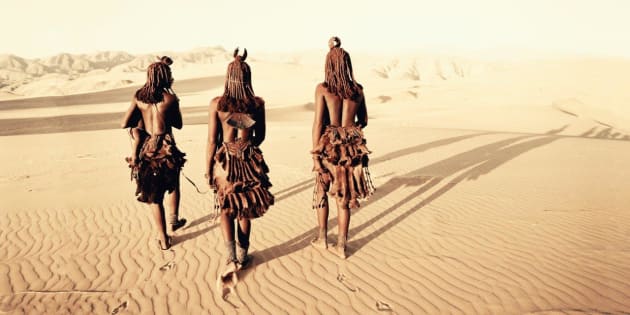
Known for his portraits of indigenous and tribal people around the world, and featured in his recently published in his book, Before They Pass Away (teNeues, 2015), British photographer, Jimmy Nelson, adds that authenticity is extremely important today. “I think the most important aspect to engaging modern audiences is to be as authentic as possible,” he says. Today’s knowledge-soaked and sceptical audiences don’t respond well to obvious attempts to garner their attention. “This generation is so attuned and educated and aware of what they’re being told and how they’re being told. They see right the way through things. It has to have truth. If it’s not sincere and not authentic, nobody will listen,” Nelson says. His project, Before They Pass Away, has received a mix of praise and criticism. While the majority responded positively, a number of people said it was an unrealistic portrayal of some of the world’s tribal people. “Some said that I should not have the right to portray people of these cultures and these tribes in a positive light, because it’s not real. I didn’t photograph them crawling out of bed in the morning with flies in their eyes. In the same way that any person, Kate Moss for example, gets out of bed with a hangover, I wait until she’s ready - until she’s in the studio and the light is correct.”
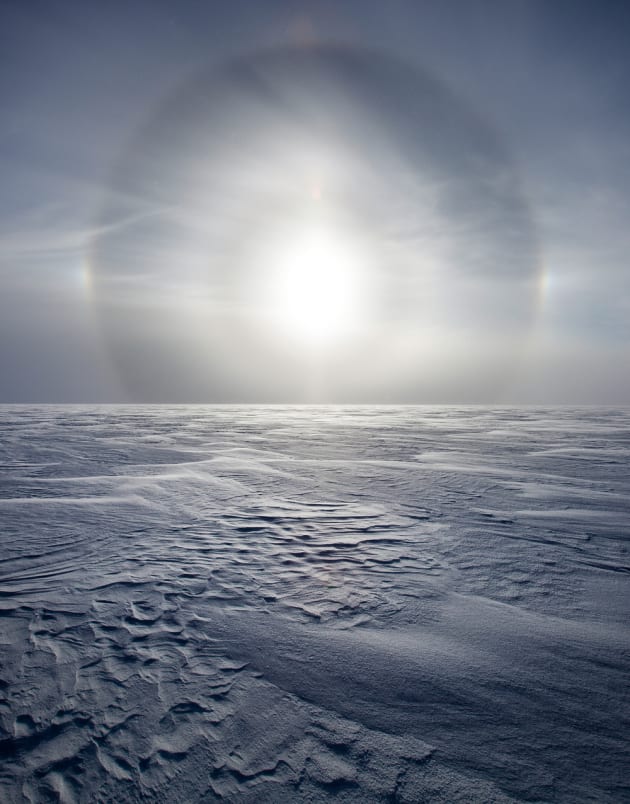
Friend or foe?
Despite negative characteristics the Internet conditions in modern audiences, it remains an invaluable resource. “It’s an inevitable tool these days,” says Sebastian Copeland. “Whether you like it or not, it’s ground zero for spreading information.” Copeland maintains that print is still an effective medium, simply because you hold people’s attention in a more committed way. “It’s not as fleeting as information that comes to you from Facebook or Instagram. But these days it’s all hands on deck. You have to access all those tools if you want to communicate,” he says. Raphaela Rosella adds: “I think the Internet is a great platform. You instantly have access to audiences from around the world. How you utilise that is up to you.” The Internet has endless possibilities and many photographers have been able to build massive followings through image platforms like Instagram. “I believe these photographers have been successful because not only are they showing captivating imagery,” she says, “they are giving their audience opportunities to follow their journey and view their process.” And that is the crux of social media – a desire to connect. The more that photographers can connect with audiences on a human level, the more likely they are to successfully engage them.

The power of images
The Internet can certainly work in favour of photographers, especially when it comes to the unparalleled popularity of imagery. Internet audiences tend to prefer photo and video content, and while photographers have to battle through a flood of imagery, iconic photos still hold immense power. “The nice thing about photographs is that they get peoples’ attention, and if it’s a striking image, people tend to spend a little bit more time on it,” Copeland says. A recent example is the picture of a drowned Syrian boy, lying face down in the sand on a Turkish beach. The Syrian refugee crisis had been growing for months previously, but that image singularly managed to focus the world’s attention on one of the greatest humanitarian crises of our time. “An iconic image is iconic because it immediately generates a response collectively,” says Copeland. “There’s no need to discuss it or analyse it, or dissect it.” Take Nick Ut’s image of a Vietnamese girl, burned and running from a napalm attack, for example. “That image was taken in 1972, and yet to this day it stands as an iconic anti-war movement image that has collectively generated the same emotion today as it did back then,” says Copeland.
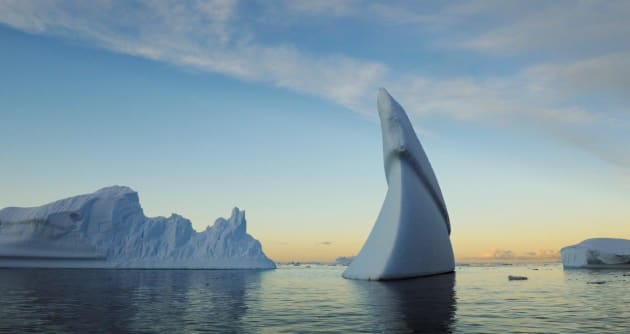
Copeland’s work with polar landscapes has received worldwide attention as well. But specific photographs stand out for him. “In 2006, I went to Antarctica and shot a photo of people stretched out on an iceberg so their bodies would form the letters SOS,” Copeland says. While he thinks the image wasn’t very original, and was certainly staged, there was a noticeable response from the public. “What I try to do is to generate an emotional connection with an environment that can seem very distant and very disconnected. I try and make people fall in love with their world in order for them to care and want to save it.”
Breaking through the noise
While it is often hard to break through the noise of social media, each photographer has stories about their projects influencing communities and environments. In 2005, Brendan Esposito documented glue sniffing addicts destroying lives and communities in Cambodia. “There was an exhibition in Cambodia, the government got involved and there was a massive clean-up. A lot of the channels bringing the glue in from Thailand were shut down. And that brought about an awareness and a little bit of change in the right direction,” Esposito recalls. Back home, Ingetje Tadros documented the lives of people living in Kennedy Hill, an Indigenous community in far North West Australia. “It was part of a sweeping government policy of settlement closures and dissolution of Indigenous Australian communities.” After being published in The Sydney Morning Herald on Australia Day, the project contributed to a national conversation about an important Indigenous issue.
Documentary projects have even taken photographers as far as the White House, as James Balog experienced. His ice project, documenting the effect of climate change on glaciers, has received a huge response from the public. “It’s been staggering. I’ve never experienced anything like this before. A completely different level of engagement.” Balog was asked to the UN Climate Summit events as a keynote speaker, and even to the White House to present his work to the President’s energy scientists and technology staff. These are just a few examples of the changes that documentary photography can bring about in society when it breaks through the noise.

© Ingetje Tadros/Diimex.
The problem with funding
Yet along with most genres, documentary photographers haven’t been able to escape the sweeping financial drought pervading the photographic world. Magazine budgets have dried up and the Internet doesn’t provide obvious sources of making money. James Balog says that the amount of time it takes to complete documentary projects puts a huge strain on photographers’ funds. “I have often been frustrated that these extended creative projects I do, take so damn long!” he says. “I’ve often contrasted the amount of time and elbow grease needed for a project compared to friends who are writers for example. It costs you vastly more to be out on location than it does to be a writer. With photography, you have to show up, be on the ground, have assistance, have equipment, and you’ve got all the travel expenses and the accommodation, and all that just kills your budget.” Most documentary photographers fund their projects with a mix of government and NGO grants, commissioned work, and savings from other jobs. While getting money is achievable, it certainly is hard work. Brendan Esposito worked three jobs for many years to fund his personal projects. “You can feel like you’re running solo sometimes because it can be quite a lonely existence,” he says. While it is hard work, photographers still manage to make a living, and become successful as a result of their projects.
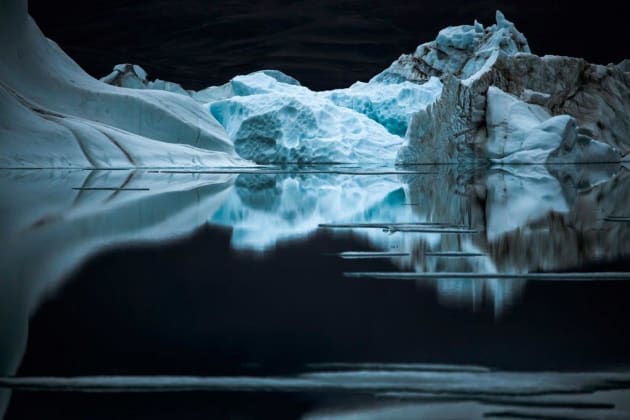
© Sebastian Copeland.
Fruits of passion
They put in the hard yards and it’s clear the dedication of photographers to their profession comes down to passion. They have an unshaking belief in what they’re photographing, and that the subject matter needs to be communicated to the world. Raphaela Rosella’s motivation goes beyond making a profit. “It’s not about making money for me. I want my stories to be out there and seen by people, but I do them because I’m passionate about the work that I make. These stories are very personal to me. When a story is close to you, that keeps you interested. I’m also driven by a passion for social change.” After documenting Aboriginal communities in Australia, Ingetje Tadros says that for her, it’s pure passion. “It’s about following your gut feeling while documenting a story, and sticking with it. My drive in documenting comes when a story is worth telling. To me, the more difficult it is, the more I feel motivated. Follow your gut feeling, if you believe in a story which is worth telling. Even if it’s small, stick with it, live it, document it, and show it.”
Movers and shakers
Documentary photographers play an important role in today’s society. They are on the forefront of critical issues spanning the globe. They provide a window into the lives of people and places most people would never have access to. These image makers have become an essential stepping stone from getting conversations started to eventual social change. “The world is always changing,” Balog says, “and I think one of the highest callings of photography acts as an interpreter of these ongoing changes.” He says there is no doubt that documentary photographers play an important role in reshaping public opinion. “I often think that humanity is like a caterpillar slowly crawling along; all these different legs moving forward, sometimes in tandem, sometimes in opposites, just inching along. You see a caterpillar and the whole thing is moving, but the antennae are going all over the place – that’s what image-making people are – ahead of the crawling machine. We help society and cultures see what’s happening around it and make sense out of it.” Despite challenges, the art of documentary photography remains as important as ever. Documentary photographers still manage to push through the noise and pace of today’s hectic society. And the world can rest assured that there is a community of dedicated images makers, telling the stories the world needs to hear; all people need to do, is listen.
